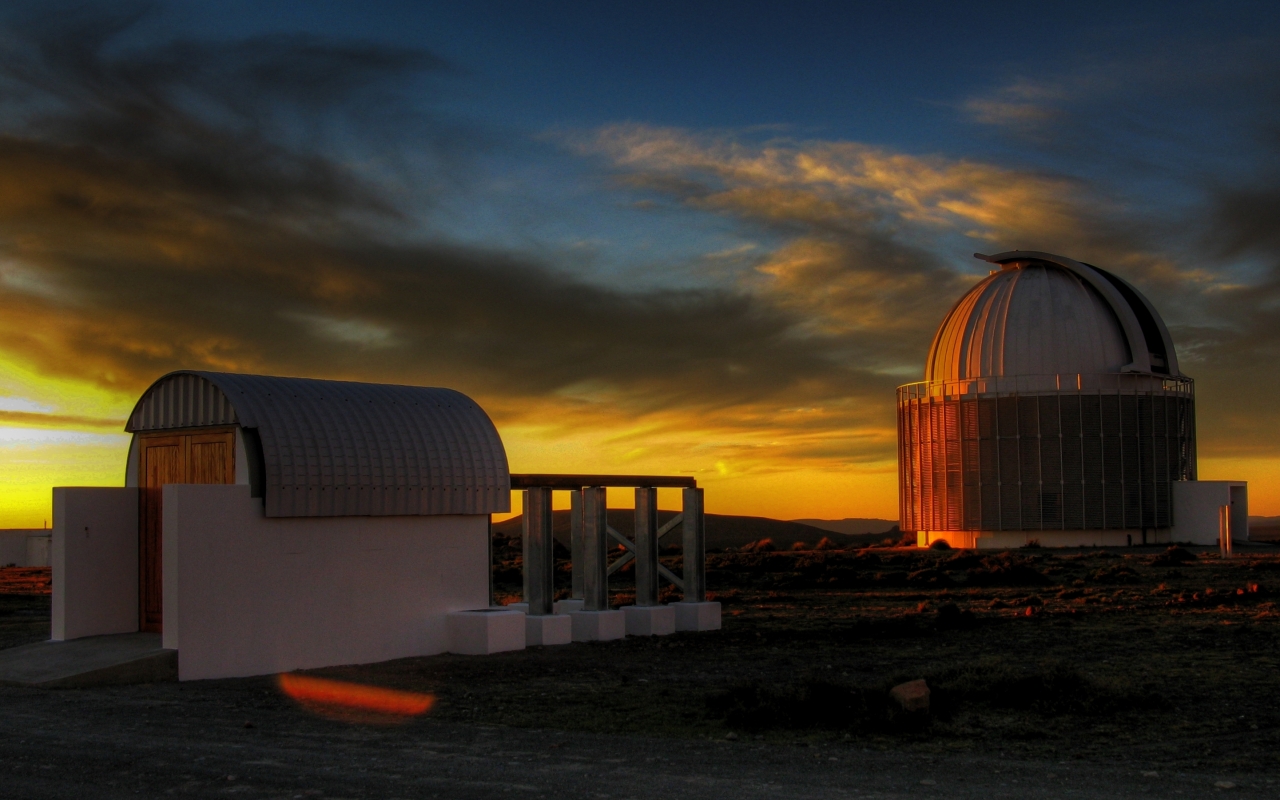The KELT project developed out of research I began in 2002, working with Andrew Gould at Ohio State. That work turned into the paper "Using All-Sky Surveys to Find Planetary Transits", which described the optimal telescope configuration for an all-sky transit survey. In short, we found that a small-aperture, wide-field telescope would be the best instrument to detect planetary transits of bright stars. Based on the calculations from the paper, we decided to build such an instrument. That became the KELT-North telescope, which is based at Winer Observatory in Southwestern Arizona. The telescope is described in the paper "The Kilodegree Extremely Little Telescope (KELT): A Small Robotic Telescope for Large-Area Synoptic Surveys", and the results from the KELT-North commissioning survey, "A Photometric Survey for Variables and Transits in the Field of Praesepe with KELT".
After taking a position at Vanderbilt University, I began building the KELT-South Telescope - a twin of KELT-North. KELT-South is located at Sutherland, South Africa, and is entering regular scientific mode. For those interested, the deployment and testing of KELT-South is outlined in exhaustive detail on the KELT-South Wiki.
The first KELT discoveries are out!
KELT-1b is a 27 MJ, 1.1 RJ transiting brown dwarf in a 1.2 day orbit around a V=10.7, F5 star. It is the shortest period and brightest transiting brown dwarf discovered, and is only the second definitively inflated brown dwarf known. "KELT-1b: A Strongly Irradiated, Highly Inflated, Short Period, 27 Jupiter-mass Companion Transiting a mid-F Star".
KELT-2Ab is a 1.5 MJ, 1.3 RJ mildly inflated hot Jupiter in a 4.1 day orbit around a slightly evolved V=8.77, F7 star. It is the ninth brightest transiting planet, and the third-brightest one discovered by a ground-based survey. The evolutionary state of the star means that this exoplanet has one of the best measured ages of any known exoplanet. The host star also has a common proper motion M-dwarf binary companion (KELT-2B) that may be the cause of KELT-2Ab's orbital location. "KELT-2Ab: A Hot Jupiter Transiting the Bright (V=8.77) Primary Star of a Binary System".
Both of these discoveries are extremely exciting, and are exactly what KELT was built to do. These two discoveries come from the KELT-North telescope, which has been operating longer than KELT-South and so if further along with its search. We also have several more interesting targets from both telescopes that we are working to confirm and hopefully publish over the next year.
